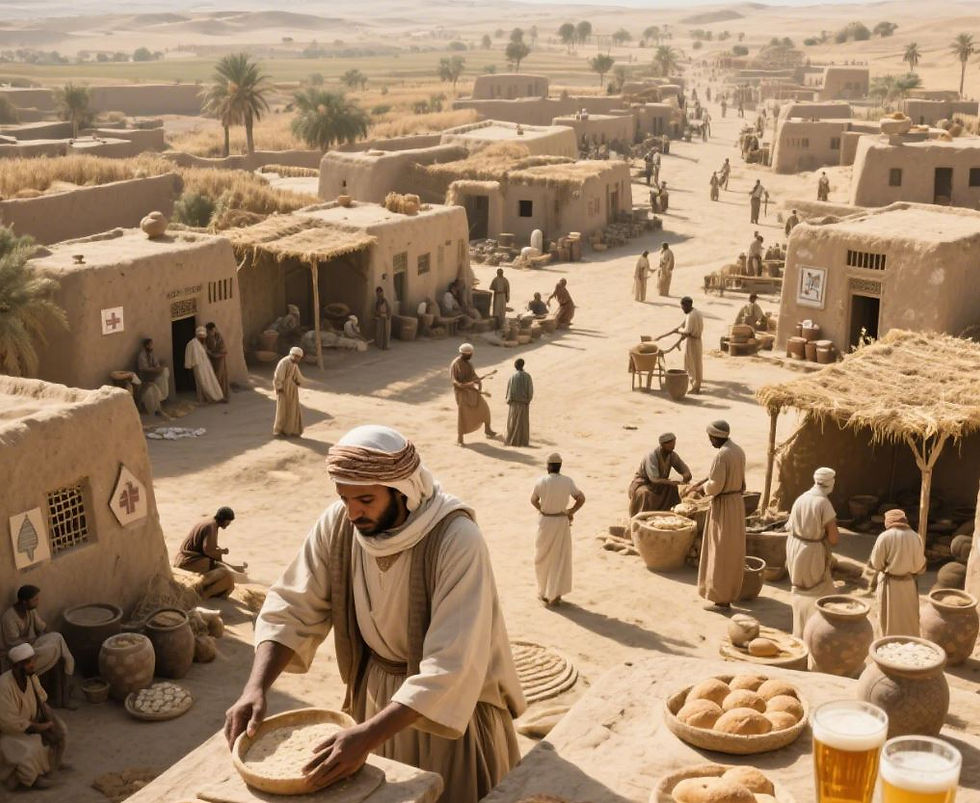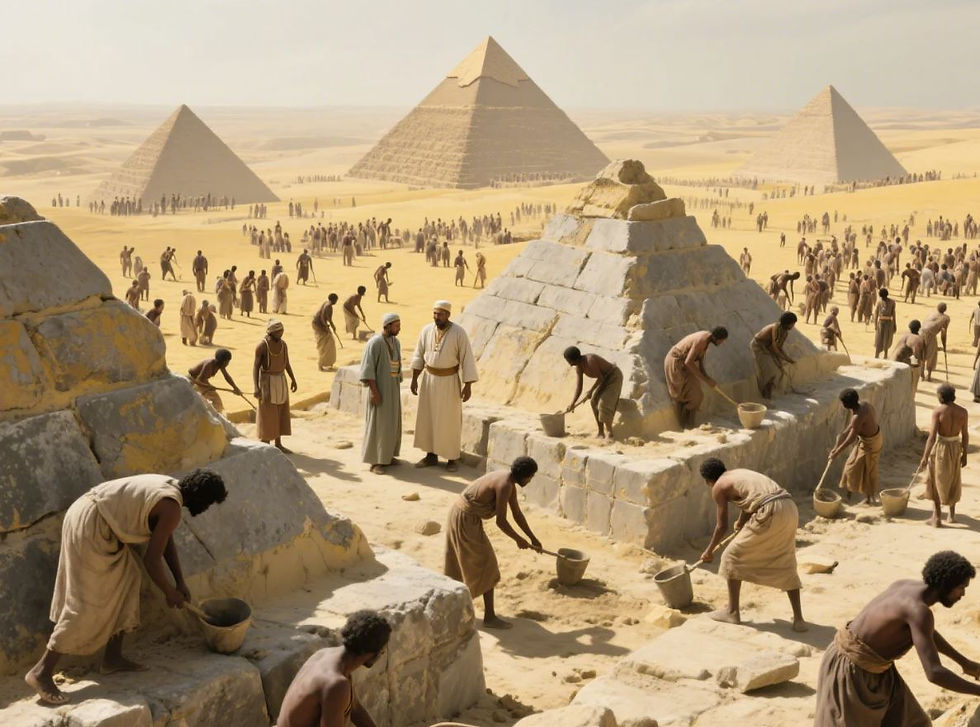They LIED to You About Ancient Egypt! Pyramid construction truth Were NOT Built by Slaves – Shocking New Proof
- Dennis Asis

- Jul 31
- 3 min read

When you picture ancient Egypt, what comes to mind? It might be the majestic pyramids standing tall against the vast desert or legends of powerful pharaohs and their mysterious tombs. For years, a widely accepted belief has stated that the Pyramid construction truth were built by slaves. However, recent archaeological findings are rewriting this story. The truth behind these remarkable structures is much more intriguing.
The Slavery Myth
For hundreds of years, it has been commonly assumed that the impressive pyramids were erected by enslaved individuals laboring under harsh conditions and strict overseers. This belief has shaped various textbooks, documentaries, and movies, influencing our perspective of ancient Egyptian society.
Recent research has shed new light on this matter. Contrary to long-standing assumptions, studies now indicate that most laborers who built the pyramids were skilled workers who lived fairly comfortable lives. This evidence challenges the simplistic view of pitiful slaves constructing monumental structures.

The New Evidence: Skilled Laborers
Archaeologists have discovered remains of worker villages situated near the pyramids. These findings reveal that those involved in constructing these wonders were not just unskilled laborers but skilled artisans and laborers with essential knowledge for pyramid building.
These villages were organized and well-structured. For instance, they contained artifacts indicating the production of staple foods like bread and beer—staples that provided necessary nutrition for laborers. Additionally, evidence of medical facilities suggests a community that cared for its workers' health. This implies that these individuals were likely mobilized from various regions of Egypt, especially during agricultural downtimes, reflecting a highly organized labor force.

The Workers' Motivation
If these builders were not slaves, what motivated them to participate in such monumental tasks? Scholars propose that the workers viewed their roles as opportunities for civic pride and loyalty to their pharaohs. Contributing to pyramid construction was more than a job; it was seen as a way to connect with the divine and ensure a well-secured afterlife for their leaders.
Moreover, many laborers received rewards for their significant contributions. Besides their wages, workers were provided with food, housing, and community benefits. This rewarding system cultivated a sense of loyalty and motivation, standing in stark contrast to what we would expect for an enslaved population.

Key Points to Consider:
Archaeological findings suggest skilled workers rather than enslaved individuals constructed the pyramids.
Organized workers’ villages revealed bread, beer production, and medical care for laborers.
Workers viewed pyramid construction as a source of civic pride and loyalty, reinforcing their commitment.
Reassessing Our Understanding of Ancient Egypt
This new perspective prompts us to rethink our comprehension of ancient Egyptian society and their remarkable achievements. Realizing that capable laborers built the pyramids not only highlights their contributions but also encourages us to reconsider other aspects of life in ancient Egypt. For instance, how did their labor dynamics compare to other ancient civilizations? What can we learn from their societal organization?
These revelations fuel our curiosity about other historical narratives, urging us to question what else we might have misunderstood aside the Pyramid construction truth?

Final Thoughts Pyramid construction truth
The idea that the pyramids were erected by slaves has been thoroughly refuted. Current discoveries show that skilled laborers, driven by civic pride and loyalty, played crucial roles in creating these architectural wonders.
As we continue exploring the archaeology of past civilizations, it is essential to keep an open mind and critically engage with historical narratives. Who knows what other surprises are waiting in the sands of time?
By sharing this newfound perspective, we not only honor the skilled workers of ancient Egypt but also strengthen our understanding of a civilization that continues to inspire awe and admiration today.

Head over to our Resource Section for more insights and useful references.





Comments